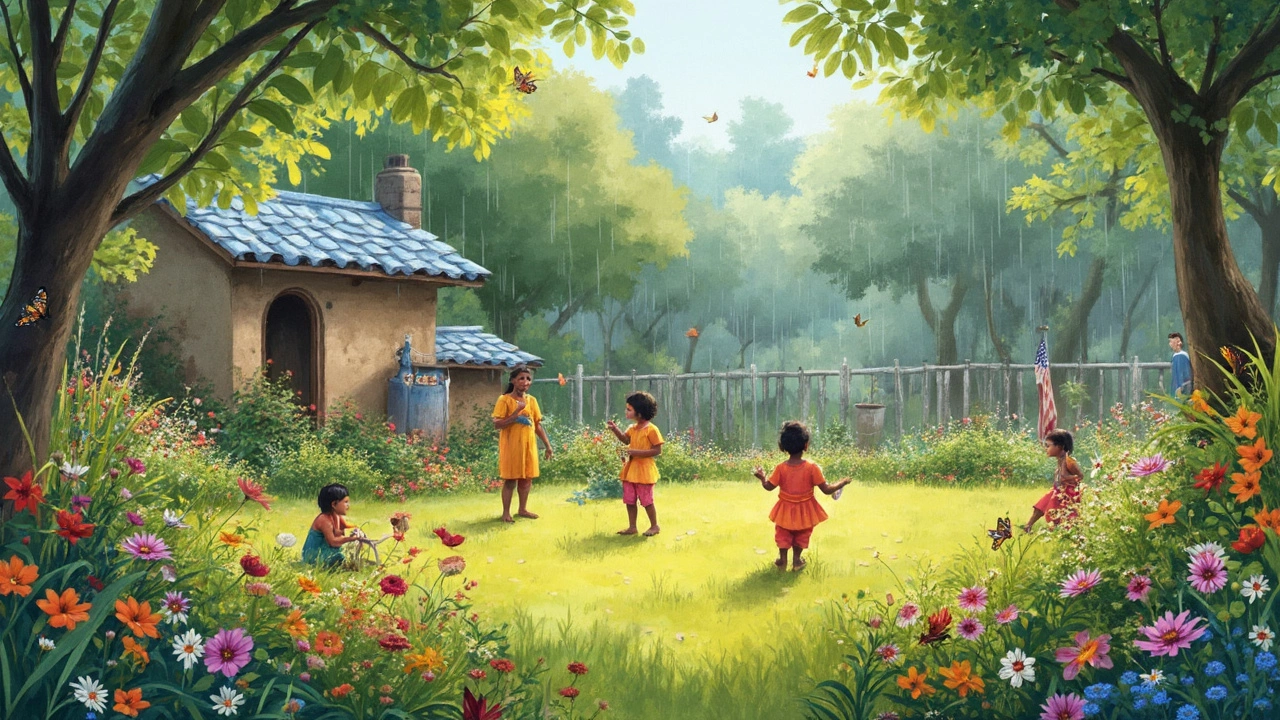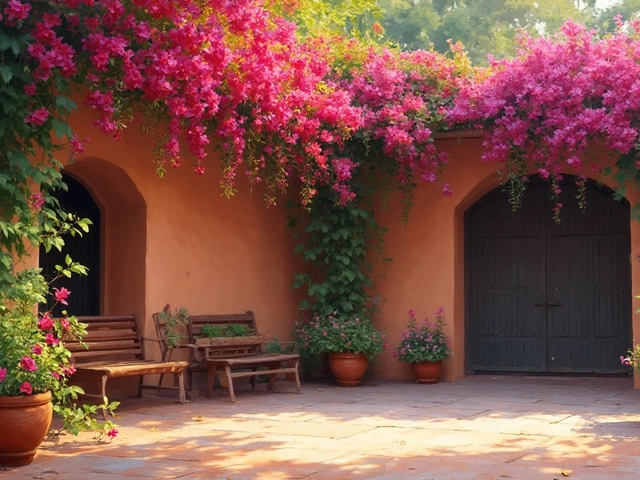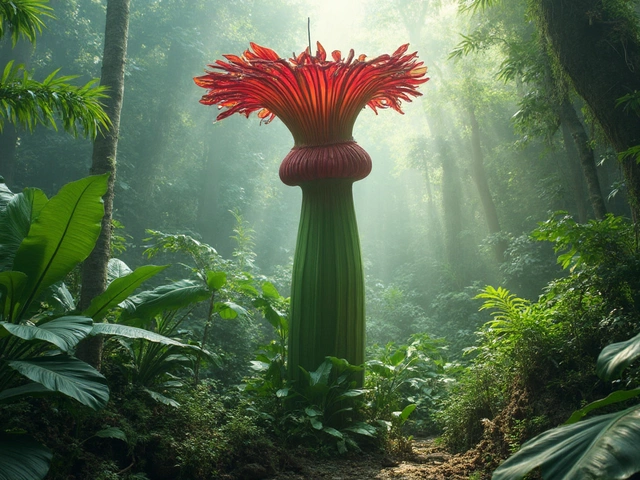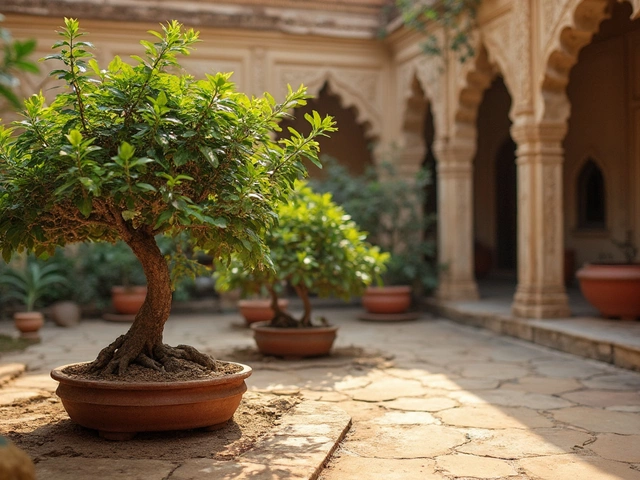Notice how every neighborhood seems to have a front yard covered in green, trimmed grass? Most people don’t realize these lawns are actually one of the biggest environmental headaches around. They chug water like crazy, eat up fertilizer, and all that mowing just pumps out carbon emissions—for a patch of green nobody really needs.
The kicker? Lawns in the U.S. alone cover more space than any irrigated crop. That means more water gets dumped on grass than on crops like corn or wheat. And it’s not just about wasting water. Runoff from lawns carries pesticides and fertilizers into streams and rivers, messing up local water supplies and hurting wildlife. Imagine your Saturday morning routine—mowing, sprinkling, spraying—and all of it piling up to make a stubborn problem even bigger.
So, if you think a plain green lawn is a safe bet, it’s time to look at what it’s costing the planet. There are way better ways to fill your garden—ways that actually help the environment and look great too. Want easy fixes and some smarter ideas? Stick around, because swapping out your grass could be the greenest move you make this year.
- Lawns: The Hidden Problem
- Why Grass Eats Up Resources
- Chemicals and Lawn Care Madness
- Biodiversity: What Lawns Destroy
- Smarter Swaps for Greener Gardens
- Easy Steps to Make a Change
Lawns: The Hidden Problem
If you think grass lawns are just a harmless backdrop for weekend barbecues, here’s the truth—these tidy green carpets make up the most unsustainable landscaping trend in the world. In the United States, lawns cover somewhere between 40 and 50 million acres. That’s more land than what’s used to grow wheat, and way more than for any other single crop except corn. That’s a wild amount of space just for grass you can’t eat or use for much else.
People maintain these lawns mostly for looks, but what they don’t see is the hidden cost. Traditional lawns are what experts call "resource hogs." They suck up trillions of gallons of water every year. Here's a quick look at some numbers that highlight how over-the-top things get with lawns:
| Resource | Annual U.S. Lawn Use | Comparison |
|---|---|---|
| Water | ~9 billion gallons per day | More than corn crops |
| Fertilizer | ~3 million tons | Mostly for lawns, not food |
| Pesticides | ~80 million pounds | Second only to agriculture |
All this for grass that offers basically zero support for local wildlife. Lawns don’t give food or shelter to birds, bees, or butterflies. And if you’re hoping to put some of that water to real use, here’s the catch: most of it just evaporates or runs off because grass doesn’t have deep roots. That runoff doesn’t just disappear— it carries all the chemicals you spray on your lawn straight into storm drains and rivers.
When you step back and do the math on all of this, it’s clear that unsustainable is putting it mildly. So before you grab that bag of grass seed or fire up the mower, it’s worth thinking about what your lawn is really costing you—and the environment.
Why Grass Eats Up Resources
If you’ve ever tried keeping a lawn green all year, you know it takes a lot more than just rain. Lawns are thirsty. Studies show that in the U.S., landscape irrigation uses almost 9 billion gallons of water a day. That’s more than some major cities drink. Most people run sprinklers whether the grass needs it or not, so a lot of that water straight up evaporates or runs off the sidewalk.
Now, let’s talk about the chemicals. To get that picture-perfect green, most grass yards need a regular dose of synthetic fertilizers and weedkillers. These things don’t just stay on your yard. They’ll wash into sewers, and from there, into rivers and lakes. Once there, they mess with fish and even get into our drinking water.
Mowing also adds up. Think about it: most folks mow every week in the summer. Older gas mowers spit out more pollution in one hour than some cars do on a road trip. Then there’s the energy use—fuel for mowers, water pumps, and sprinklers isn’t free or planet-friendly when it adds up millions of times across the country.
| Resource | Annual Use (U.S. lawns) |
|---|---|
| Water | Over 3 trillion gallons |
| Fertilizer | About 70 million pounds |
| Gasoline (mowers and tools) | Nearly 800 million gallons |
Put simply, lawns gobble up resources because they’re designed to look good, not to work with nature. It’s out of step with smart sustainable gardening ideas, where you grow what fits your climate and needs less pampering. Cutting back on grass is one of the easiest ways to save water, energy, and cut pollution at home.
Chemicals and Lawn Care Madness
Here's the thing about those lush, perfect lawns: they don't just happen. Most lawns need a steady diet of chemical fertilizers, weed killers, and bug sprays to look the way people expect. These chemicals don't just stay put—they travel. After a rain, a lot of that stuff runs right off the grass and ends up in storm drains, creeks, and rivers, making water pollution a real issue.
Look at the numbers: EPA researchers have found that American homeowners use about 59 million pounds of pesticides per year—most of it for lawn care. To put it in perspective, that’s way more than farmers use per acre. We’re dumping more chemicals on our backyards than on the crops we eat.
| Type | Usage (million lbs/year) |
|---|---|
| Pesticides (home lawns) | 59 |
| Pesticides (agriculture, per acre) | less per acre than lawns |
And it’s not just the environment taking a hit. Kids and pets end up rolling around in the stuff, which is less than ideal for their health. Many common lawn weed killers, like those containing 2,4-D, are linked to everything from skin rash to possible hormone disruption. The kicker? These chemicals don’t just wash away. They can stick around in the soil and move into local water sources.
Even if you skip the pesticides, most lawns rely on synthetic fertilizers that break down into stuff like nitrogen and phosphorus. When these run off, they can spark algae blooms in lakes and rivers, killing fish and making water unsafe for swimming and drinking.
If you want a yard that actually helps the planet, start ditching the chemicals. Choose sustainable gardening tricks like using natural mulch, planting native plants that rarely need sprays, or letting clover fill in the gaps—clover even makes its own fertilizer by pulling nitrogen from the air. Less fuss, less poison, and your yard still looks good.

Biodiversity: What Lawns Destroy
If you walk across a typical grass lawn, you won’t spot much besides blades of grass and maybe a few stubborn weeds. That’s the problem. Traditional lawns are basically green deserts when it comes to supporting life. They drive out insects, birds, and almost everything else that should be thriving in a healthy outdoor space.
Most grass varieties for lawns are not even native to North America. Because of that, local animals—especially pollinators like bees and butterflies—don’t get the food or shelter they need. One study by the Smithsonian found that suburban neighborhoods with big lawns had almost 50% fewer native bird species than yards with a variety of native plants.
When you spray chemical weed killers and dump on fertilizer, it doesn’t just affect your own gardening patch. These chemicals can kill off helpful bugs and upset the balance in the soil. Fewer bugs means fewer birds, and so the domino effect keeps rolling.
| Landscape Type | Insect Species Count | Bird Species Count |
|---|---|---|
| Monoculture Lawn | 15-30 | 8-12 |
| Native Plant Garden | 80-110 | 22-28 |
The numbers say it all. Swap a patch of plain grass for native flowers, bushes, or even a few vegetable plants and you get a literal explosion of life in your yard. Butterflies come back. Bees show up. Songbirds stop by instead of flying over.
If you want your backyard or front yard to become a real hub for nature, ditching the classic grass routine is a game changer. You start helping the planet just by saying no to a monotone grass lawn and letting your space get a little wild with sustainable, living plants.
Smarter Swaps for Greener Gardens
Ready to kick the old grass habit? There are simple, proven ways to make your yard way more eco-friendly. Ditching chemical-filled lawns for smarter options helps fight water waste, lowers pollution, and turns your yard into a real hangout for bees, butterflies, and birds. Everyone wants a good-looking space—so why not pick one that actually helps the planet?
The best place to start is with native plants. These are the plants that have been growing naturally in your area forever. They’re tough, they don’t need much water once they get going, and bugs and birds love them. A 2021 study from the National Wildlife Federation showed native gardens can help support three times more pollinators compared to regular turf lawns. That's a big boost for local wildlife, just from swapping what you plant.
Here are some winning swaps for your "sustainable gardening" makeover:
- Groundcovers: Try clover, creeping thyme, or sedum. These stay green, don’t need mowing, and can handle some foot traffic.
- Wildflower Meadows: Throw down a mixed bag of wildflower seeds. You’ll get pops of color, less watering, and way more pollinators stopping by.
- Gravel & Hardscapes: Add some rock features or paths with recycled pavers. These barely need upkeep and let rain soak in instead of running off.
- Edible Gardens: Swap dead space for raised beds with herbs or veggies—think tomatoes, peppers, or basil. It saves money and tastes better than store-bought.
- Mulching: Use wood chips or leaves to cover exposed soil. Mulch locks in moisture and cuts way down on weeds.
Certain swaps hit two birds with one stone—like rain gardens that collect water from your gutter spouts. A rain garden filled with strong-rooted natives can catch stormwater, stop runoff, and help recharge the groundwater supply. According to the EPA, a 300-square-foot rain garden can soak up up to 30,000 gallons of rain a year.
One expert puts it like this:
“Replacing just part of your lawn with native plants can cut your water use by more than half, boost local biodiversity, and seriously cut down your need for fertilizers and pesticides.” — Doug Tallamy, entomologist and author
If you’re thinking this sounds like a big project, don’t stress. You can tackle it a little at a time. Start with a corner, toss in a patch of wildflowers, or swap a strip of lawn along the sidewalk. Each small step adds up to a more sustainable gardening win—not just for you, but for everybody sharing your environment.
Easy Steps to Make a Change
Ready to ditch that thirsty grass? Making a more sustainable yard isn’t hard, and it can actually save you time and money. Plus, you’ll help tackle major issues like water waste and chemical run-off right from your doorstep. Here are a few simple moves that make a huge difference.
- Swap Grass for Native Plants. Pick flowers, shrubs, or ground covers that naturally grow in your area. They’re used to your climate, need less watering, and support local biodiversity. Want proof? In places like California, gardens with native plants use up to 80% less water than turf lawns.
- Use Mulch Generously. Mulch keeps moisture in the soil and weeds out. That means much less watering and no need for chemical weed killers. Wood chips, bark, or even shredded leaves do the job well.
- Rethink Lawn Size. If you really love some grass, just shrink down the patch. Limit grass to spots you actually use, like a play area or a path, and fill the rest with sustainable gardening ideas.
- Skip the Synthetic Fertilizers. Compost and organic options feed the soil and your plants without the risk of harmful run-off. If you’re not already composting, start with a simple backyard bin—it’s less work than you’d think.
- Opt for Rain Gardens and Permeable Surfaces. Rain gardens soak up stormwater, cut down on runoff, and keep pollution out of waterways. Permeable pavers and gravel help water get back into the ground and not into the gutter.
Want to see just how much impact your choices can have? Here’s a quick comparison:
| Yard Type | Average Water Use (gallons/year) | Fertilizer Needed |
|---|---|---|
| Traditional Lawn | Up to 40,000 | High |
| Native Plant Garden | Under 10,000 | Very Low |
If you swap out just half your grass, you could save tens of thousands of gallons every year. That’s not just good for your bills, it’s a solid win for your local ecosystem. So next time you’re out in the yard, maybe skip the mower and grab a shovel instead. Your neighbors might just copy you.





